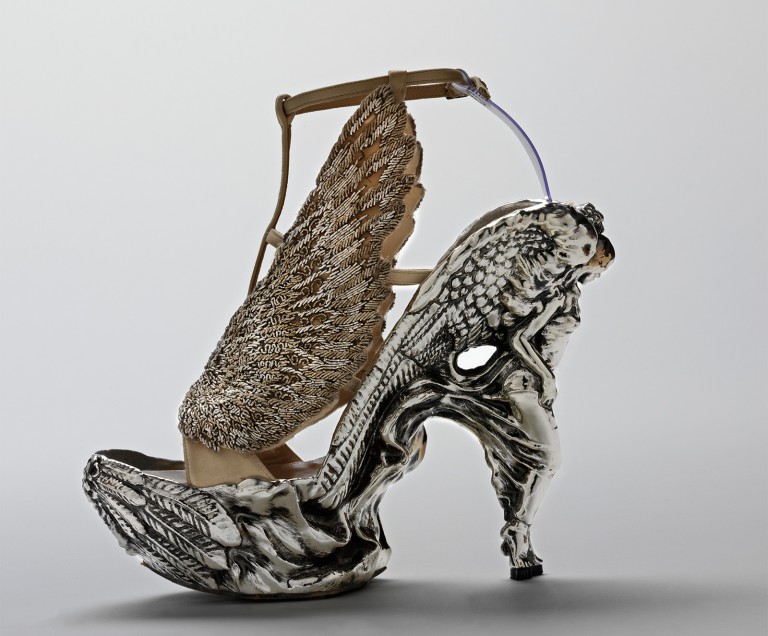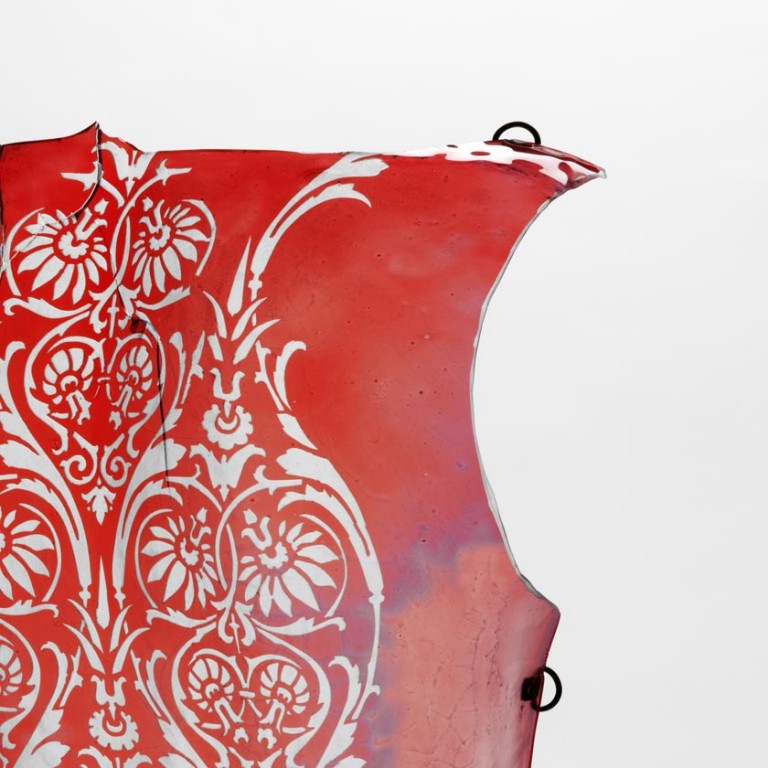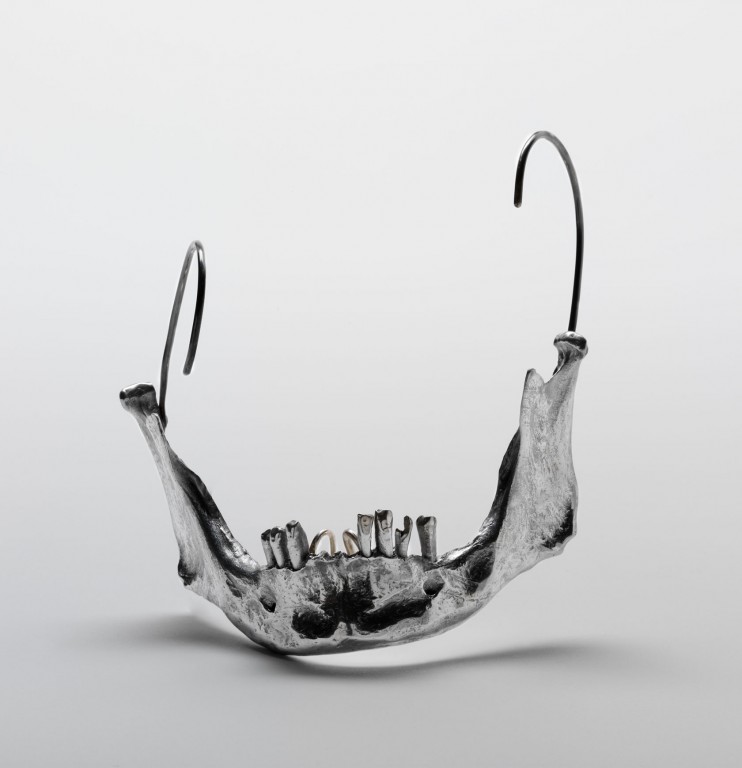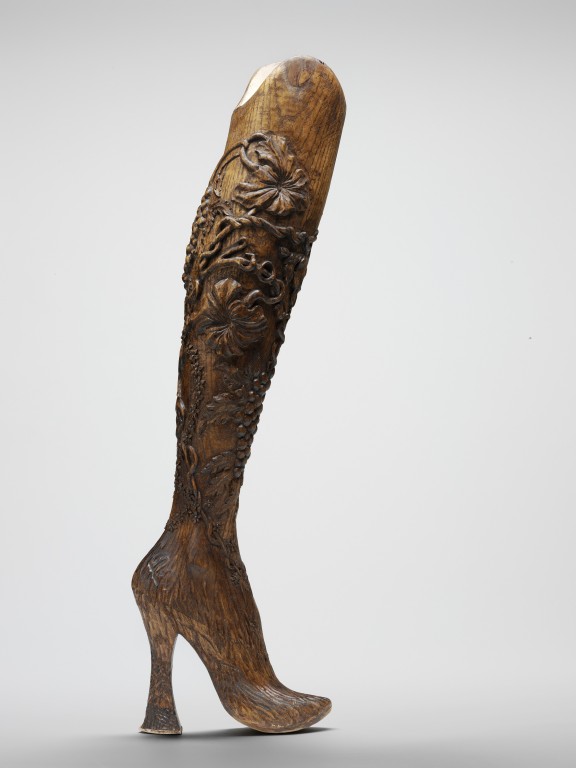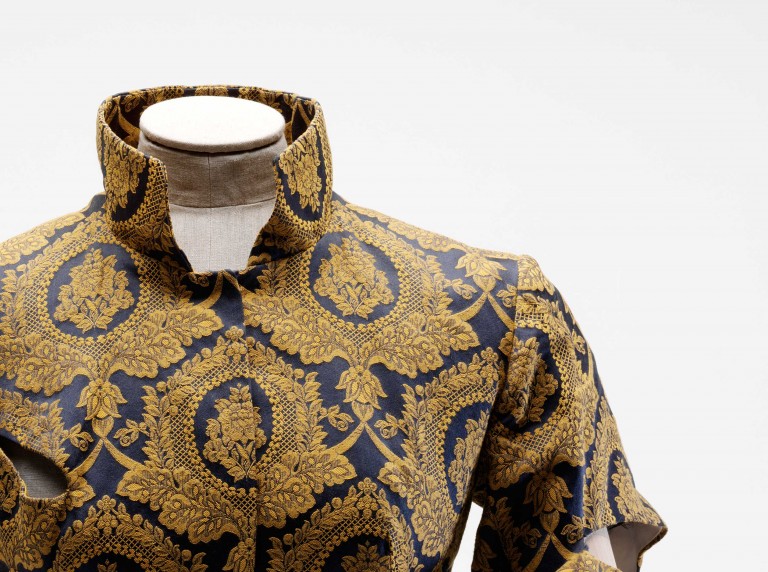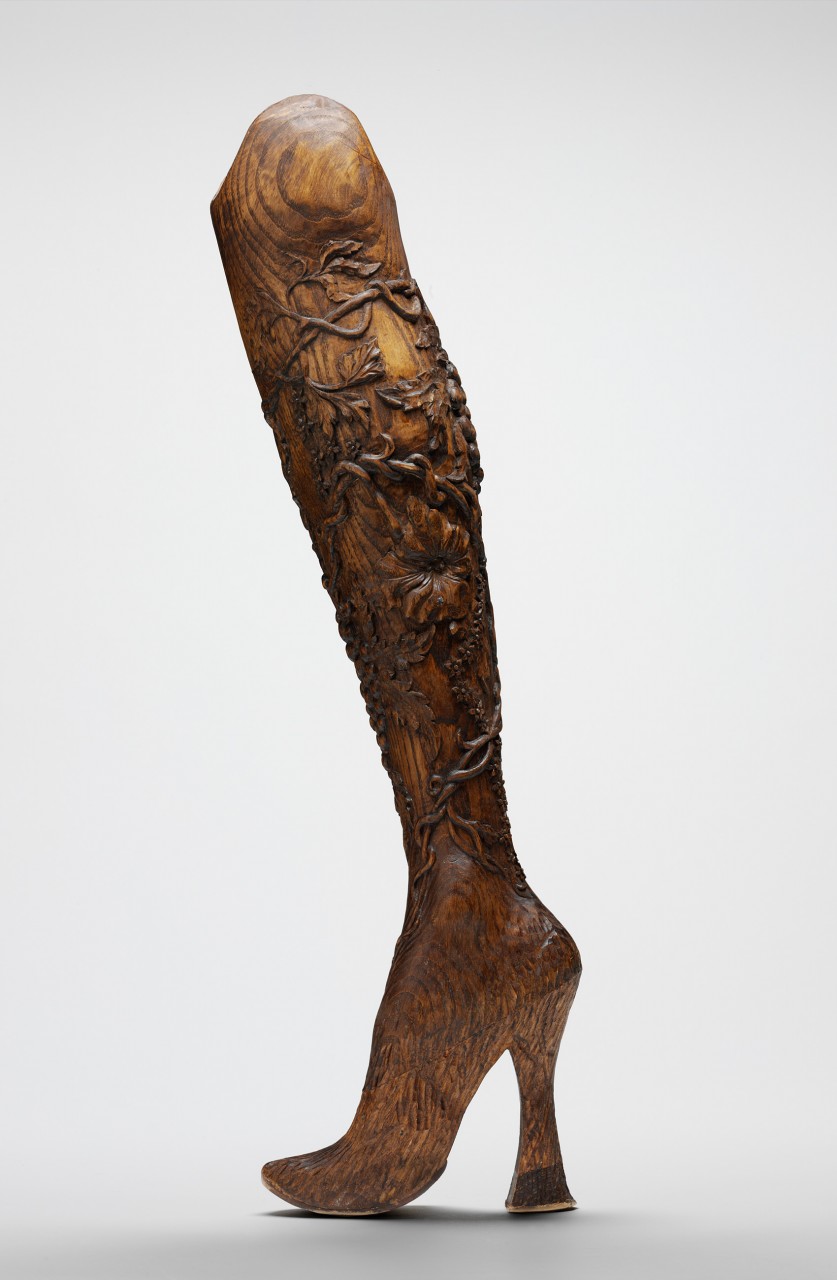ENCYCLOPEDIA OF
COLLECTIONS:
NO. 13
McQueen’s thirteenth collection, simply titled No.13, was presented on a pared down, unvarnished wooden runway conceived of by Joseph Bennett, who had joined the team as production designer. Underpinning the collection was a concern with the handcrafted, inspired by the late Victorian Arts and Crafts Movement, with designs constructed from wood, leather, lace and raffia. Balsa-wood skirts, in natural tones, splayed out to mimic the spines of a fan, while winged bodices of the same wood connected the use of organic materials with the celestial and the sublime. The emphasis on the natural and the traditional stood in stark contrast to a soundtrack by American hip hop artists the Beastie Boys.
Paralympic athlete Aimee Mullins entered wearing a pair of wooden prosthetic legs, hand-carved in elm, which were reminiscent of the filigree qualities of Baroque carver Grinling Gibbons. Once again, McQueen experimented with the manipulation of bodily forms. Hard, leather bodices with high necks formed restrictive carapaces that forced models to adopt an erect posture. One model, wearing a mesh crinoline, appeared as though suspended in a spiral of wire, recalling ‘Models in a Surreal Landscape’, a feature photographed by André Durst for British Vogue (15 January 1936). Surgical undertones were implicit in lacing that appeared as crude stitches, and in moulded bodices and pants with leather buckles that evoked medical corsetry. These designs were inspired by the workshops at Queen Mary’s Hospital, Roehampton, which were instrumental in pioneering prostheses for casualties of the First World War. Yet this hardness was tempered by soft, tiered lace skirts and trousers – suggestive of the ruffles on a flamenco dancer’s skirt – that harmonized the aesthetic into images of romance and beauty. Recognition of this achievement was marked by the award of ‘Dress of the Year’ (for the second time), fashion editor Susannah Frankel selecting McQueen’s lace dress with moulded brown leather collar.
In spite of the understated backdrop, there was no shortage of spectacle. Models rotated on plinths like fragile music-box dolls. The finale was the most arresting of any McQueen show yet. Former ballerina Shalom Harlow stood centre stage between two industrial robots, which appeared to interact with her in a gentle dance before turning predator and firing sprays of black and acid-yellow paint at her pure white trapeze dress. The sequence, inspired by a Rebecca Horn installation High Moon (1991), was perhaps intended as a counterpoint to William Morris’s anti-industrial ethic, provoking comment on the interaction between man and machine at the turn of the twenty-first century.

